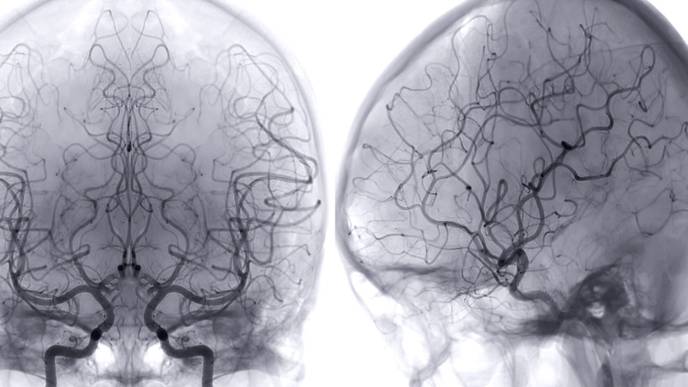Brain Scans from Former NFL Players Identify Repair Protein in the Brain

12/04/2023
Register for free to listen to this article
Thank you. Listen to this article using the player above. ✖
Want to listen to this article for FREE?
Complete the form below to unlock access to ALL audio articles.
In a new study using brain scans of former NFL athletes, Johns Hopkins Medicine researchers say they found high levels of a repair protein present long after a traumatic brain injury such as a concussion takes place. The repair protein, known as 18 kDa translocator protein (TSPO), is known to be present in the brain at high levels in the immediate aftermath of brain injury as part of the inflammatory response and to facilitate repair. The new findings, published Oct. 30 in JAMA Network Open, suggest that brain injury and repair processes persist for years after players end collision sports careers, and lead to long-term cognitive problems such as memory loss.
“The findings show that participating in repeated collision sports like football may have a direct link to long-term inflammation in the brain,” says Jennifer Coughlin, M.D., associate professor of psychiatry and behavioral sciences at the Johns Hopkins University School of Medicine. Ongoing studies like the current one, she says, add details about how the brain heals — or doesn’t — and how repeated brain injuries, even mild ones that players routinely shake off, may over time affect cognitive abilities.
Want more breaking news?Subscribe for FREE to get the latest science stories delivered straight to your inbox. Don't let the discoveries pass you by!
Coughlin notes that TSPO is a protein associated with immune cells in the brain known as microglia. This protein is always present at relatively low levels. When a person experiences a traumatic brain injury (TBI) of any kind, TSPO levels are greatly increased as part of the immune response. Past studies have shown the presence of elevated levels of TSPO up to 17 years after injury, which, researchers say, indicates the brain remains in a heightened state of injury and repair long after the traumatic event.
In the new study, researchers examined MRI and PET scans that were completed between April 2018 and February 2023 of 27 former NFL players. They compared these brain scans to those acquired from 27 non-collision sport athletes (swimmers) who all participated for at least two years in National Collegiate Athletic Association Division I, II or III level competition. All athletes were between 24 and 45 years of age, and all were male. All participants in both groups underwent cognitive assessments, including memory tests.
Results show that former NFL players performed worse in learning and memory tests than the swimmers. Additionally, they found that levels of TSPO in the former NFL athletes were higher on average compared with the swimmers, particularly in areas of the brain associated with memory and attention.
“These findings are relevant to both collision sport athletes and other populations that suffer from single or reoccurring mild TBIs, including those experienced during military training and repeated head banging behaviors in children,” says Coughlin. “Since TSPO is associated with repair, we don’t recommend the use of drugs or other interventions at this time. Instead, we will continue to monitor TSPO levels through more research, in order to test for sign of resolution of the injury with more time away from the game.”
Coughlin stresses that if there are cases where TSPO remains high, researchers will study those factors that associate with a vulnerability to lasting injury after a professional career in American football. Ultimately, they aim to guide strategies for the use of immunomodulating treatments (possible anti-inflammatory medications) to heal the brain when needed.
Researchers say they plan to continue to follow the study’s population of former NFL athletes to track TSPO levels over time to see whose brain heals and whose does not. The goal is to inform development of medications and personalized guidelines for rest periods after repeated brain injuries.
The new research adds to a growing stack of evidence that collision sports that involve repeated, even low-level, blows to the head, including football, soccer and boxing, may lead to dementia and other forms of cognitive disorders.
Reference: Rubin LH, Du Y, Sweeney SE, et al. Imaging brain injury in former National Football League players. JAMA Netw Open. 2023;6(10):e2340580. doi: 10.1001/jamanetworkopen.2023.40580
This article has been republished from the following materials. Note: material may have been edited for length and content. For further information, please contact the cited source.

Facebook Comments